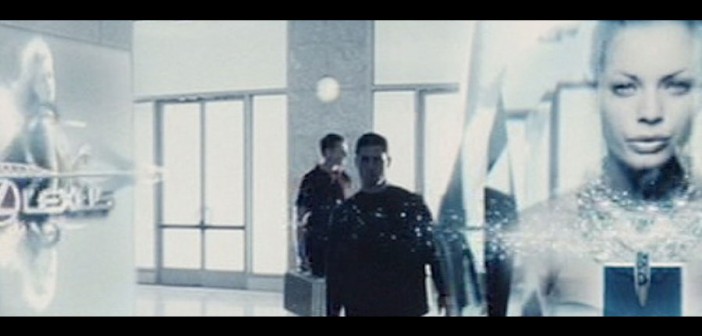In the 1956 sci-fi novella “Minority Report,” Philip K. Dick predicted technology advances that are now commonplace, such as personalized advertising and facial recognition software; foreshadowing the future of marketing and branding.
In 2015, much from the fiction — and the 2002 movie adaptation of it — doesn’t seem so far fetched. For its “Because I’m a Girl” campaign, children’s charity Plan UK created bus billboards that scanned the viewer’s face before displaying a different ad depending on the viewer’s gender. The purpose of the campaign was to bring awareness to women who are denied rights around the world based on their sex.
Facial recognition increasingly allows brands to customize campaigns. Already, such companies such as Tesco, Google and Facebook are using the technology. A patent published by Apple shows how the company has investigated the possibility of using facial recognition as a security measure for unlocking iPhones.
The problem with facial recognition software in marketing, however, is it all sounds a bit Big Brother-ish. “What’s unique about face recognition is the fact that you can do it surreptitiously, from a distance, and continually,” Joseph Atick, one of the pioneers in developing facial recognition, told 60 Minutes in 2013. Although his work as a young scientist helped make the technology a reality, its current implementation makes him nervous. “Big Brother is no longer big government; Big Brother is big business.”
The Atlanta-based ad agency Redpepper, for example, is testing physical-world check-ins in Nashvillle with their Facedeals project. Users grant Facedeals access to their Facebook; Facedeals then learns the user’s face. The idea is that stores, bars and restaurants rigged with Facedeals cameras will “recognize” users who have opted into the program — and will text a customized coupon to the user’s phone based on their social media activity.
Most facial recognition campaigns aren’t as intrusive. Virgin Mobile launched their Blinkwashing campaign in 2013 — a video choose-your-own-adventure where the absurd plot of the clip changes based on your eye movements. The company worked with creative agency Mother NY and digital production lab Rehab Studio to create the project. The user could “click” through various video scenes, such as a gorilla in a kitchen doing sign language or talking penguins, with a blink of their eye.
“As we discovered with Blinkwashing, ceding control to consumers was much more engaging and friendly,” says Jasmine Clark of Mother NY. “Using facial recognition to advance the plot of a piece of communication, alter its ‘flavor’, or highlight certain user interests and preferences seems like the more prudent course to take.”
All that was needed for the Blinkwashing facial recognition campaign to work was allowing the eye-tracking technology access to your webcam; and then performing a couple of test blinks so the technology learns your blink. Mother NY discovered with Blinkwashing that ceding control to consumers was much more engaging and friendly – rather than having the technology mine data. “At the end of the day, the experience and reward needs to be worth the ‘sacrifice’ of privacy, even if only for a few moments,” said Clark.
“The technology allowed users to be part of a visual effect they’d normally only be able to observe passively, giving them a deeper understanding of the ad,” said Tom LeBree, strategy partner at Rehab Studios.
But LeBree cautions against using facial recognition software just to have the latest cool tech in your campaign. “There seems to be a lot of agencies in ad land at the moment taking an approach of ‘if in doubt put a drone in it.’ Or whatever the latest technology is.”
The South African coffee company Douwe Egberts also devised a target marketing idea utilizing facial recognition technology. The company set up a coffee machine at the O.R. Tambo International Airport. As a free promotion, the coffee machine used facial recognition to detect when travelers were yawning as they walked passed. Those who yawned were instantaneously dispensed a cup of coffee from the vending machine. Of course, once travelers figured out the coffee machine was activated by a yawn, they knew exactly how to get their free cup of coffee; which, in turn, made the word spread throughout the airport about this magical machine.
“We think the future of facial recognition is more in the realm of providing greater entertainment and engagement, rather than personalization,” said Mother NY’s Clark. “Nobody wants a world where ‘Minority Report’-esque retinal scanning bombards people with uniquely tailored ads the second they sit down in front of a screen. And with consumers demanding greater control over their own data, it would be unwise to appear invasive or manipulative.”
For Nike Free Face,created by Nike and Wieden + Kennedy Tokyo, consumers could control the movements of the Nike Free shoe with their facial expressions. To highlight its flexible sole, the shoe would contort in a way that mimicked whatever wacky face the user made — squished, bent, distorted.
“Future consumers will likely become astute about the things they interact with,” said Rehab Studios’s LeBree. “They will see data as something they own and not something they make, and thus giving their data away will become much more of a trade off: ‘Will giving this data to this brand enhance my life or give me a better experience?’ As for it being Big Brother or not, facial recognition can tell a lot less about you than your mobile phone.”


